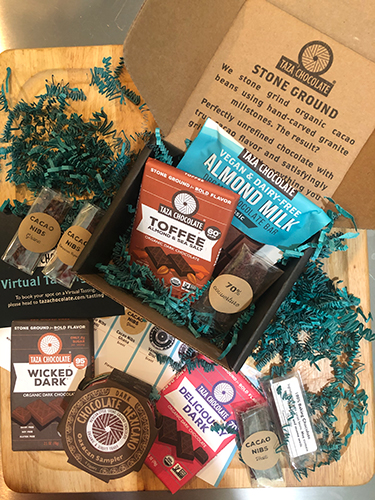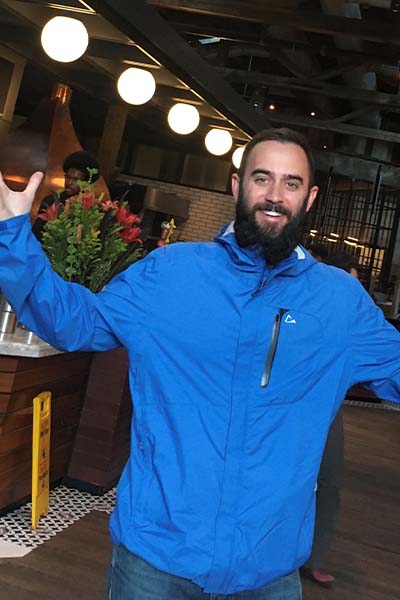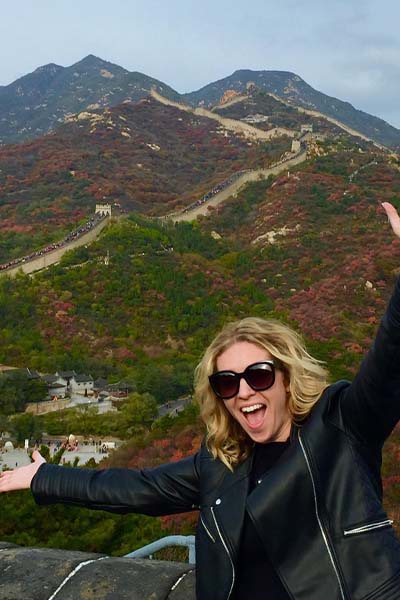
As the pandemic fades and travel resurges, you may be wondering…will virtual travel experiences stay relevant? The answer is YES, and if you’re a tourism provider, here’s the number one reason why you should continue to invest in creating engaging virtual tourism experiences:
They’re a highly effective marketing tool.
Virtual tourism experiences can play a key role in the trip planning process for consumers. If done right, they can lure people into your sales funnel, upsell services and amenities, and – a critical benefit – provide rich, engaging texture for your various content channels.
Moreover, the pandemic has made people really comfy with online interaction in all aspects of life, business and personal. This means a turnkey, willing audience now exists…whereas before the pandemic, virtual experiences were much less of a mainstream opportunity.
“Virtual tours” have been around for a while, but largely in the form of online 360° tours and pre-recorded videos. These can also be helpful marketing tools in a tourism provider’s toolbox… but nothing beats live interaction for making strong connections with guests.
The pandemic has catapulted such virtual, interactive experiences onto a global stage and into the norm. It’s not that they didn’t exist before. It’s just that the labor and budget resources required to do them justice felt like a heavy lift for a possibly elusive audience. Now, all that has changed.
If you’re seeking to up your game (or get started) in the virtual tourism arena, here are three tips to help you create effective, engaging virtual tourism experiences that are both memorable and shareworthy:
1. Include live human interaction. A live host can create the kind of dynamic experience essential to establishing bonds with guests. And let’s face it…this gives guests as close to an in-person experience as possible without leaving their computer. Participants can ask questions – vocally or in a chat function – and converse/interact with the host in various ways as the experience unfolds. The most effective hosts are vibrant, charismatic storytellers who are quick on their feet and extensively knowledgeable about the subject at hand. One of the greatest examples of this online right now is WildEarth.tv. These daily live safaris do an extraordinary job of broadcasting with guides in multiple locations to ensure viewers can always go where the action is. And the more you watch, the more you get to know (and love) the guides. They are passionate, funny, experienced, and inspiring.
2. Optimize real-life elements for virtual settings. Nothing sabotages a virtual tour like being reminded it’s not as good as the real-life experience. You never want your host to be forced to say things like “if you were here, you’d be able to see…” or “you can’t see it that well through your screen, but…” or “when we do this in person, we…” A virtual experience shouldn’t be a substandard, repurposed version of your real-life ones. Even if it’s based on an experience you offer in real life, it needs to be built from the ground up AS a virtual experience. Also, your hosts should be fully trained on the virtual technology being used (or else you have an experienced crew running point). And further, they should be specially trained on how to deliver this experience virtually, especially if it’s one they’re used to hosting in person. Organic, stone-ground chocolatier Taza does a spectacular job of this with their factory-tour-turned-virtual-tasting. Sign up for one to get some inspiration…plus get a delicious virtual tasting kit (pictured above).
3. Create visual assets that enhance (and guarantee) effective content delivery. Virtual experiences can’t rely on the rich immersion of real life, nor the chemistry that emerges organically when groups are brought together. People sitting at a screen need substantive visual interaction to keep them engaged. It complements the host’s vocal delivery, punctuates the session with visual texture, and underscores memorable moments within the experience. Further, it helps blend education and entertainment, which is one of the best ways to forge connections. These folks – Airbnb hosts Lucie & David – created an absolutely brilliant online tourism experience taking people on a walking tour of Prague, Czech Republic that follows in the footsteps of a 17th century plague doctor. The Redpoint gang took this tour together and afterward, every single one of us said “I want to go to Prague.”
All types of tourism and hospitality providers – hotels, resorts, inns, attractions, DMOs, restaurants, cruise lines, tour companies and more – can do this…and continue to do it as part of their marketing efforts. Tour the area, do interactive kids programs, host cooking demos with chefs, tour grounds and gardens, meet and greet with local businesses, explore nooks and crannies of a lodging property… whatever. Think of things your guests could experience and bring that to life virtually.
Does this require more logistics and is it more labor intensive than just producing a pre-recorded experience to slap up on your website? Yep. But the live, interactive experiences can be more powerful, more shareworthy, and more effective at generating conversions than a recorded video.
Think you don’t have time to do all this? You do. Read why here: Marketing…It’s About Time.
And as a parting gift: here’s some inspiration to help you in creating and cultivating your own engaging virtual tourism experiences:
 get travel marketing tips
get travel marketing tips 




